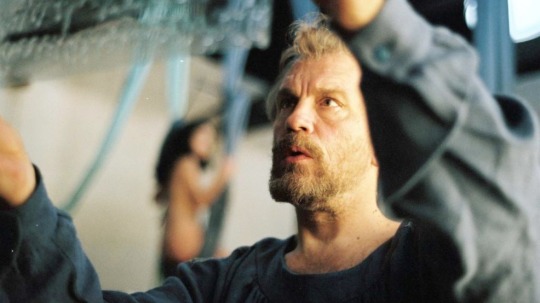#klimt 2006
Text
for my bestie
#klimt 2006#egon schiele#egon schiele edit#now im dying from cringe#again#actually i made five edits#so... if you wanna see them... just. let me know?...#👉👈
22 notes
·
View notes
Text
tumblr viděl 100 filmů! aneb 25. statistika

Princezna se zlatou hvězdou (1959) : vidělo 97,6 %, nezná 0 %
Tři oříšky pro Popelku (1973) : vidělo 95,9 %, nezná 0 %
Pyšná princezna (1952) : vidělo 94,3 %, nezná 0 %
S čerty nejsou žerty (1985) : vidělo 93,9 %, nezná 1,2 %
Noc na Karlštejně (1974) : vidělo 92 %, nezná 1,3 %
Lotrando a Zubejda (1997) : vidělo 91,5 %, nezná 1,2 %
Princ a Večernice (1979) : vidělo 91,3 %, nezná 1,4 %
Ať žijí duchové (1977) : vidělo 90,8 %, nezná 5,3 %
Princezna ze mlejna (1994) : vidělo 90,7 %, nezná 1,3 % N
Anděl Páně (2005) : vidělo 88,4 %, nezná 1,1 %
náhodné poznatky: speciální faktoidní edice
zastoupení filmů podle dekády je takovéhle:

Nejvíce známých filmů pochází z osmdesátých let, pak následují sedmdesátky a za nimi s drobným odstupem roky 2000–2009; stále existují dvě dekády, z kterých nikdo nic neviděl, a uboze jsou na tom nové filmy, které obvykle znáte, ale nesledujete je (ten jediný spatřený film je štědrovečerní pohádka); zdaleka nejpopulárnější dekáda jsou ovšem léta padesátá, kde jde sice jen o 11 filmů, to ale představuje hned 73 % ze všech filmů z této dekády, o kterých se hlasovalo – asi budu muset dát do pranice něco budovatelského, aby se to vyrovnalo
nejúspěšnějšími roky z pohledu kultovnosti jejich filmů jsou 1977 a 1980 (po pěti filmech), jinak je to poměrně vyrovnané
jediná dekáda, kde jsme kolektivně viděli aspoň jeden film z každého roku, jsou nulté roky, jinak se to žádnému desetiletí nepovedlo, ale osmdesátky se blíží (schází už jen 1988!)
průměrný počet hlasů je (zaokrouhleně) 76, což je více než u všech filmů dohromady (70) i u neznámých filmů (64)
stejně jako u stovky neznámých filmů jsem si dovolila něco o žánru:
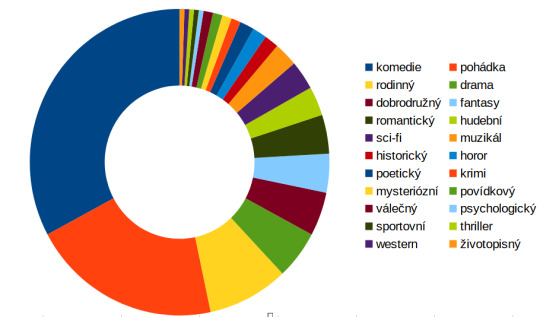
Celkem nepřekvapivě jsou top 3 žánry komedie (64), pohádka (40) a rodinný film (17) – pro srovnání u 100 neznámých filmů šlo o komedii (57), drama (39) a pohádku (9) – jsme prostě veselý národ; stejně jako minule předestírám, že jde o žánry z ČSFD, někdy značně pochybné.
a závěrem statistika dle režisérů (hvězdičkou jsou označeni ti, kteří figurují také v žebříčku neznámých filmů, kurzívou pak ženy):
10 filmů: Zdeněk Troška*
8 filmů: Václav Vorlíček*
7 filmů: Oldřich Lipský*
5 filmů: Martin Frič*, Karel Janák*
4 filmy: Bořivoj Zeman*, Jiří Menzel*, Jan Svěrák
3 filmy: Marie Poledňáková, Ladislav Smoljak*
2 filmy: Karel Zeman, Zdeněk Podskalský*, Karel Smyczek, Jiří Strach*, Vlasta Janečková, Jan Hřebejk, F. A. Brabec*, Věra Plívová-Šimková*, Dušan Klein*, Karel Steklý, Juraj Herz*, Václav Gajer
1 film: Hynek Bočan, Jiří Adamec, Jiří Vejdělek, Eduard Hofman, Filip Renč*, Josef Mach, Ivo Macharáček, Vladimír Karlík, Antonín Moskalyk, Vlasta Pospíšilová + Aurel Klimt*, Roman Vávra, Ludvík Ráža, Zdeněk Zelenka, Jiří Věrčák, Peter Bebjak, Miloslav Šmídmajer*, Ondřej Trojan*, Antonín Kachlík, Zdeněk Sirový*, Milan Cieslar*, Petr Nikolaev*, Ivo Novák*, Jindřich Polák*
ve srovnání s režiséry neznámých filmů je tu patrný jistý monopol a musím vám říct, že ten Troška na mě skočil totálně nečekán a ze zálohy
Tož. Stačilo by. Uvidíme se opět, až uvidíte nebo neuvidíte nějaké filmy. Celý žebříček viděných filmů najdete pod perexem. Mějte se fanfárově.
Princezna se zlatou hvězdou (1959)
Tři oříšky pro Popelku (1973)
Pyšná princezna (1952)
S čerty nejsou žerty (1985)
Noc na Karlštejně (1974)
Lotrando a Zubejda (1997)
Princ a Večernice (1979)
Ať žijí duchové (1977)
Princezna ze mlejna (1994) N
Anděl Páně (2005)
S tebou mě baví svět (1982)
Jak utopit dr. Mráčka aneb Konec vodníků v Čechách (1974)
Tři veteráni (1983)
Šíleně smutná princezna (1968)
Marečku, podejte mi pero! (1976)
Anděl Páně 2 (2016)
Jak dostat tatínka do polepšovny (1978)
Jak vytrhnout velrybě stoličku (1977)
Princezna ze mlejna 2 (2000) N
Princové jsou na draka (1980)
Zlatovláska (1973)
Císařův pekař - Pekařův císař (1951)
Pelíšky (1999)
Adéla ještě nevečeřela (1978)
Jak se budí princezny (1977)
Honza málem králem (1977)
Dívka na koštěti (1971)
Limonádový Joe aneb Koňská opera (1964)
Účastníci zájezdu (2006)
Stvoření světa (1957)
O princezně Jasněnce a létajícím ševci (1987) N
Jára Cimrman ležící, spící (1983)
Na samotě u lesa (1976)
Rebelové (2001)
Vesničko má středisková (1985)
Z pekla štěstí (1999)
Vrchní, prchni (1980)
Hrátky s čertem (1957)
Tajemství staré bambitky (2011)
Slunce, seno, jahody (1984)
Slunce, seno a pár facek (1989)
Sněženky a machři (1982) N
Kytice (2000)
O princezně, která ráčkovala (1986)
Obecná škola (1991)
Cesta do pravěku (1955)
Třetí princ (1982)
Slunce, seno, erotika (1991)
Postřižiny (1980)
Nejkrásnější hádanka (2008)
Kameňák (2003)
Páni kluci (1975)
Fimfárum Jana Wericha (2002)
Dařbuján a Pandrhola (1959)
Popelka (1969)
Kolja (1996)
Kuky se vrací (2010)
Snowboarďáci (2004)
Jezerní královna (1998) N
Čert ví proč (2003)
Tajemství hradu v Karpatech (1981)
Jak básníci přicházejí o iluze (1984)
Sedmero krkavců (1993)
Dobrý voják Švejk (1956)
Což takhle dát si špenát (1977)
Korunní princ (2015) N
Rafťáci (2006)
Kouzla králů (2008)
Škola základ života (1938)
Krakonoš a lyžníci (1980)
Saturnin (1994)
Poslušně hlásím (1957)
Slavnosti sněženek (1983)
Krakonošovo tajemství (2022)
Vratné lahve (2007)
Jak svět přichází o básníky (1982)
Probudím se včera (2012)
Jáchyme, hoď ho do stroje! (1974)
Spalovač mrtvol (1968)
Občanský průkaz (2010)
Princ Bajaja (1974)
Černí baroni (1992)
Dešťová víla (2010)
Princezna a půl království (2019) N
Pupendo (2003)
Panna a netvor (1978)
Báječná léta pod psa (1997)
Léto s kovbojem (1983)
Z pekla štěstí 2 (2001) N
Rozpuštěný a vypuštěný (1984)
Trhák (1980)
Pod Jezevčí skálou (1978) N
Anděl na horách (1955)
Ať žijí rytíři (2009)
Kačenka a strašidla (1992)
Máj (2008)
Vynález zkázy (1958)
Král sokolů (2000)
Na pytlácké stezce (1979) N
Kristián (1939)
7 notes
·
View notes
Photo
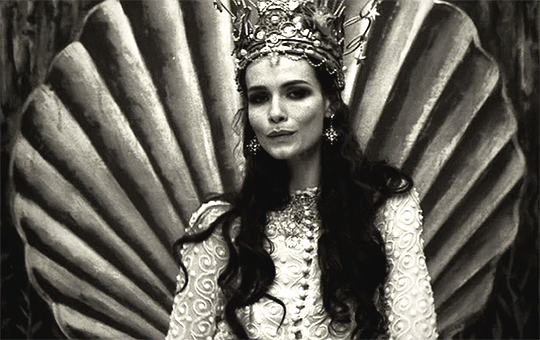


Saffron Burrows as Lea de Castro in Klimt (2006), dir. Raúl Ruiz
10 notes
·
View notes
Text
ARTE NO CINEMA
A seguir, algumas cenas de filmes que referenciaram direta ou indiretamente obras de arte:
As Aventuras do Barão de Munchausen (1988) X O Nascimento de Vênus (1485-86) de Sandro Botticelli
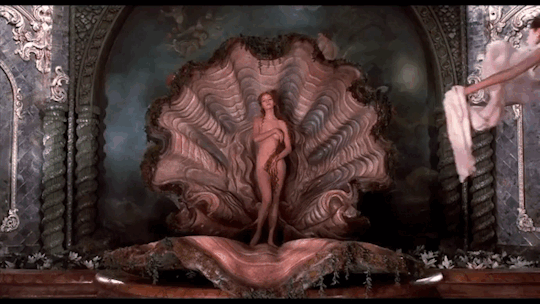
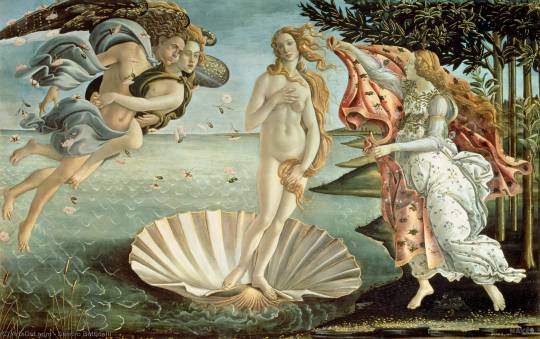
The Cell (2000) X Dawn (1989) de Odd Nerdrum

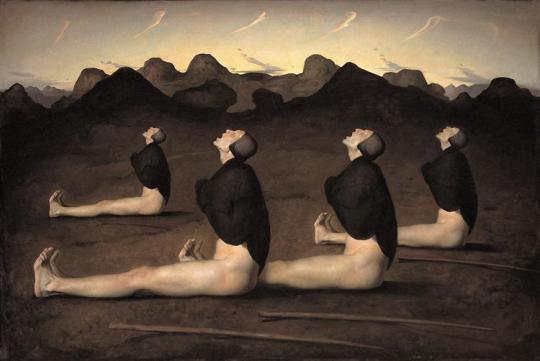
Melancolia (2011) X Ophelia (1851-52) de John Everett Millais
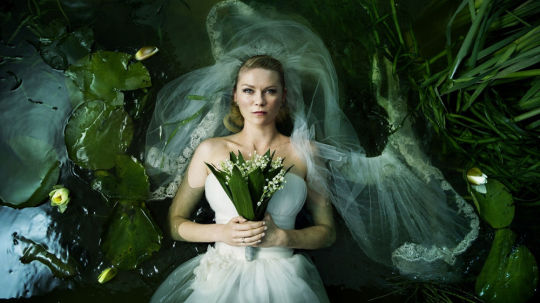
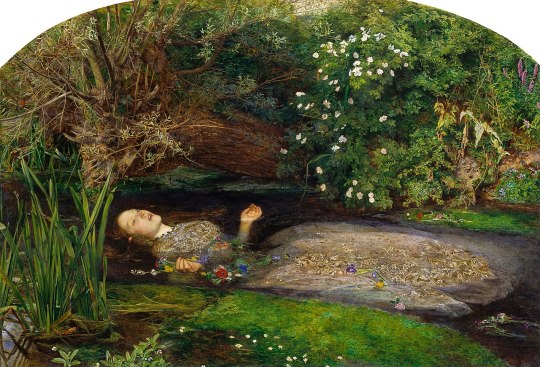
Marie Antoinette (2006) X Napoleão Cruzando os Alpes (1801) de Jacques-Louis David
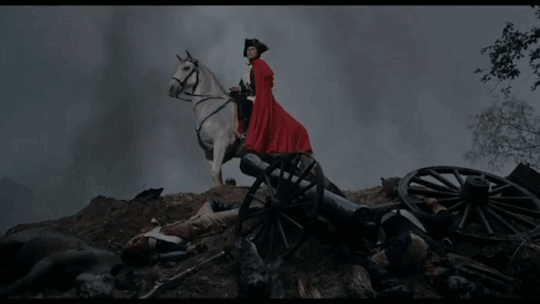
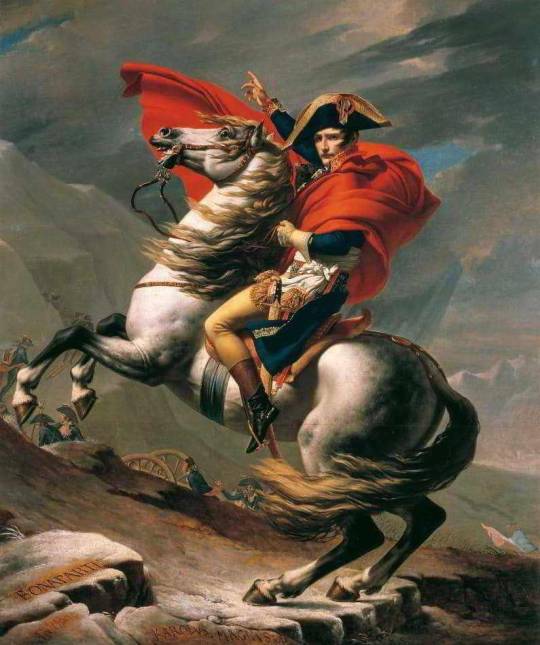
Animatrix - Episódio Beyond (2003) X Woman with Dove (1955)


Shutter Island (2010) X O Beijo (1907-08) de Gustav Klimt
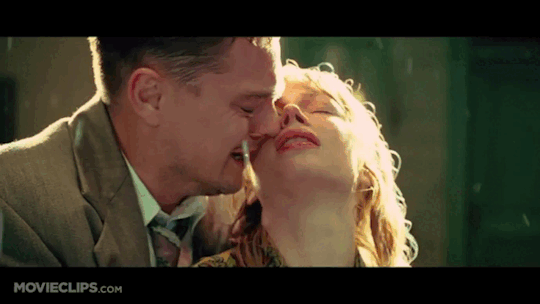

Laranja Mecânica (1971) X Prisioneiros que Exercitam (1890) Vincent Van Gogh


A Casa de Jack (2018) X A Barca de Dante de Eugène Delacroix (1822)
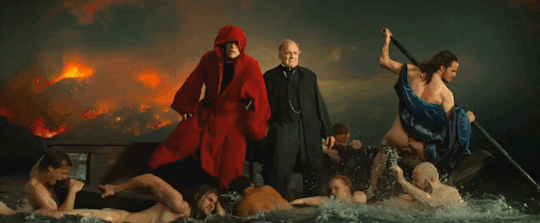
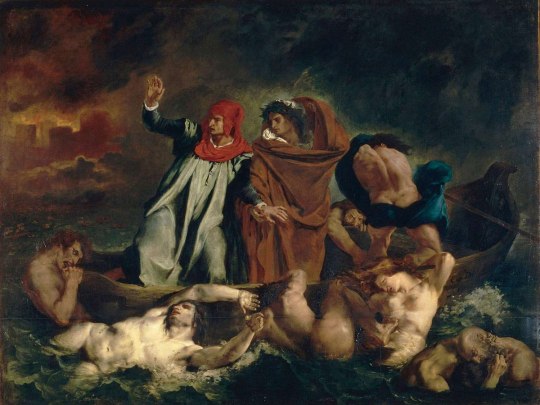
Frozen (2013) X O Balanço (1767) de Jean-Honoré Fragonard
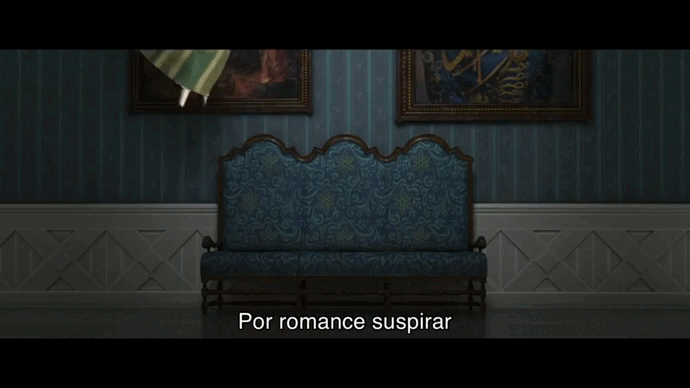

A Pequena Sereia (1989) X Madalena Penitente (1625-40) de Georges de La Tour
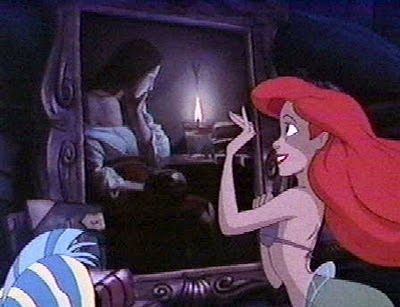

Irmão Urso (2003) X Uma Tarde de Domingo na Ilha de Grande Jatte (1884-86) de Georges Seurat

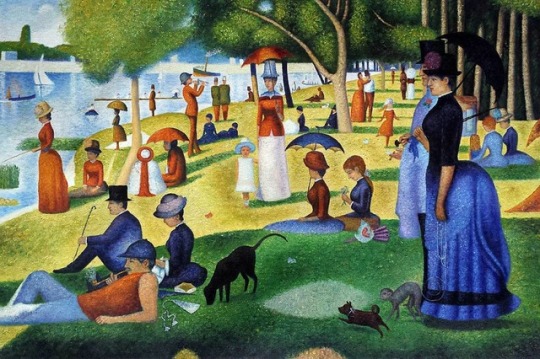
REFERÊNCIAS BIBLIOGRÁFICAS:
ALLEAUME, Bastien. WHEN CINEMA PAYS TRIBUTE TO MASTERPIECES OF ART HISTORY. Artmajeur Magazine, 20 de março de 2021. Disponível em: <https://www.artmajeur.com/en/magazine/29-pop-culture/when-cinema-pays-tribute-to-masterpieces-of-art-history/330308>. Acesso em: 26 de maio de 2022.
WHEN Art and Film Become One: 9 Movies Inspired by Art. Artsper Magazine, 07 de maio de 2021. Disponível em: <https://blog.artsper.com/en/lifestyle/when-art-and-film-become-one-9-movies-inspired-by-art/>. Acesso em: 26 de maio de 2022.
AZEVEDO, Filipe. Referências de arte no cinema. Tiktok, 05 de maio de 2022. Disponível em: <https://vm.tiktok.com/ZMLcPpwsw/?k=1>. Acesso em: 26 de maio de 2022.
5 notes
·
View notes
Text
[70] “Of One Mind” — 2B Compressed, Charcoals group (Procreate app, iPad, Apple Pencil).
The two most famous paintings of love that I’m aware of are Rembrandt’s “The Jewish Bride” and Klimt’s “The Kiss”. Rembrandt’s painting is beautiful — the simple pose of each figure is subtly, yet deeply, emotive; the handling of paint is masterful, one stares at the woman’s garment in wonder, it’s abstract art long before abstract art was invented. Klimt’s painting is gaudy and adolescent — the poses are melodramatic; the use of gold leaf (thin gold foil incorporated throughout the painting) is vulgar; the negative space is boring and the patterns within the simple shapes are barely above a level of good wallpaper. Rembrandt’s painting is a work of high art; Klimt’s painting is a glorified magazine illustration. It’s neither a good expression of love nor of lust.
(“The Kiss”, which was auctioned off in 2006 for $135 million, is an example of how financially bloated, and tasteless, the fine art’s world has been and continues to be. I think that the rich spend a fortune on art to try to impress their rich colleagues, who may be impressed, but not by the actual art, but by the amount of money wasted on it. The more money a rich person wastes, the more impressive he, or she, becomes to the other rich. It’s a competition. (In fairness to whoever bought the thing, the painting is famous and you will find an image of it, and a reference to it, in every art history book. But the problem with most art history books is that they give all the artworks that are mentioned in them equal stature. That’s deceptive because not all “great” art is equally great. (And whether “The Kiss” even qualifies as being labeled great art is debatable. It reminds me of medieval Christian icon paintings, which are far superior. (Imagine if Klimt titled his painting “Jesus Kissing Mary”.))))
My drawing is, in spirit, modeled on Rembrandt’s painting, but without the beauty or the mastery. I excluded decoration and references to material reality — the clothes worn by the figures are nondescript and not important, though it is important that they are wearing clothes and not standing nude. This is not Adam and Eve in the Garden of Eden. And while Rembrandt’s painting, with its depiction of wealth through the jewelry and the attire of the figures, is a pragmatic expression of love and of marriage, my drawing is a sentimental fantasy. (That, I suppose, was partly modeled on Klimt’s painting.)
[ My tastes are changing. I’m beginning to find much of the great art of the Western culture to be too pretty. Cézanne’s paintings — too pretty. Renoir’s paintings — too pretty. Raphael’s paintings — too pretty. They’re wearing too much make-up. They are dessert — cheesecake, ice cream, pie. I don’t want my art to be dessert, I want my art to be steak and potatoes, or chili, or stew. But I don’t want it to be French cuisine, with all those precious sauces and delicate, sophisticated tastes. (One aspect of Picasso’s art that may be unappreciated is that most of it is not pretty, or delicate, or sophisticated. (Picasso was not a dandy.) That makes it revolutionary.) ]
0 notes
Text
Milo Manara, il maestro del fumetto erotico
Milo Manara è uno dei fumettisti italiani più famosi e apprezzati al mondo. Nato a Luson, in provincia di Bolzano, il 12 settembre 1945, ha iniziato la sua carriera negli anni '70 e da allora ha pubblicato centinaia di opere, tra cui fumetti, illustrazioni e dipinti.
Il maestro Milo Manara
Manara è noto soprattutto per il suo stile sensuale e provocatorio, che ha contribuito a ridefinire il concetto di fumetto erotico. Le sue protagoniste, spesso ispirate a figure femminili reali, sono ritratte con un'attenzione particolare ai dettagli anatomici e a un erotismo raffinato e mai volgare.
Tra le opere più famose di Manara figurano "Il gioco", "Il profumo dell'invisibile", "Lo zenit", "Il nome della rosa" e "Aphrodite IX". Queste opere hanno avuto un successo internazionale e hanno contribuito a rendere Manara un'icona del fumetto mondiale.
Il percorso artistico
Manara ha iniziato la sua carriera come illustratore di riviste di fumetti e illustrazioni. Nel 1970 ha pubblicato la sua prima storia a fumetti, "Lo scimmiotto innamorato", scritta da Giancarlo Berardi. Negli anni successivi ha collaborato con diverse case editrici, tra cui la Sergio Bonelli Editore e la Mondadori.
Nel 1976 Manara ha pubblicato "Il gioco", una storia a fumetti erotica che ha avuto un successo clamoroso. Questa opera ha consacrato Manara come uno dei maestri del fumetto erotico e ha contribuito a rendere popolare questo genere in Italia e all'estero.
Negli anni successivi Manara ha continuato a pubblicare opere di successo, sia a fumetti che in illustrazione. Tra le sue opere più importanti figurano "Lo zenit" (1988), "Il nome della rosa" (1991), "Aphrodite IX" (1990-2008) e "Il profumo dell'invisibile" (2006-2015).
Il successo internazionale
Le opere di Manara sono state pubblicate in tutto il mondo e hanno ricevuto numerosi premi, tra cui il Grand Prix de la ville d'Angoulême (1985) e il Premio Yellow Kid (1995). Manara è stato anche insignito del titolo di Cavaliere della Repubblica Italiana (2006).
Il successo di Manara è dovuto a diversi fattori, tra cui il suo stile sensuale e provocatorio, la sua capacità di raccontare storie coinvolgenti e il suo talento artistico. Manara è un autore che ha contribuito a rinnovare il fumetto e a renderlo un mezzo espressivo più maturo e complesso.
Le influenze
Manara ha dichiarato di essere stato influenzato da diversi artisti, tra cui Gustav Klimt, Egon Schiele, Aubrey Beardsley e Salvador Dalì. Le sue opere sono caratterizzate da un'attenzione particolare ai dettagli anatomici e a un erotismo raffinato e mai volgare.
Manara è un autore che ha contribuito a ridefinire il concetto di fumetto erotico. Le sue protagoniste, spesso ispirate a figure femminili reali, sono ritratte con un'eleganza e una sensualità che le rendono delle vere e proprie icone.
Foto di Rudy and Peter Skitterians da Pixabay
Read the full article
0 notes
Text
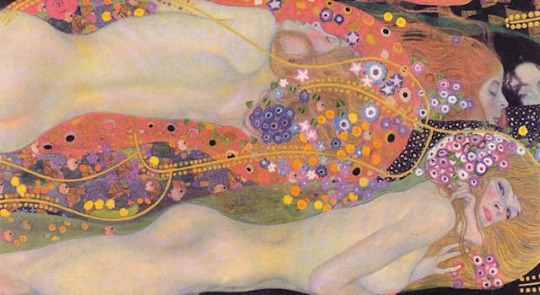
Who painted 'Water Serpents II', which was once stolen by the Nazis during World War Two?
Created between 1904 and 1907, "Water Serpents II" is a prime example of Gustav Klimt's (1862-1918) distinctive style, characterised by intricate patterns, vibrant colours, and a focus on the female form. The painting depicts two intertwined female figures, their bodies entwined in a sensual embrace, surrounded by a sea of swirling patterns and aquatic elements. Klimt's use of gold leaf, a signature technique, adds a luminous and ethereal quality to the artwork.
When the Nazis swept through Europe, the artwork, along with numerous other valuable pieces, was confiscated from its rightful owners, the Bloch-Bauer family, who were prominent Jewish art collectors in Vienna. The family's collection was seized by the Nazis and displayed in the Austrian Gallery in Vienna. The painting became a symbol of the Nazis' looting and cultural appropriation, as they sought to erase the Jewish heritage and claim these artworks as their own.
After the war, the painting's fate remained uncertain. It was not until the late 1990s that the Bloch-Bauer family's heirs began a legal battle to reclaim their stolen artworks. The case gained international attention, highlighting the ongoing issue of Nazi-looted art and the importance of restitution.
In 2006, the Austrian government finally returned "Water Serpents II" to the rightful heirs of the Bloch-Bauer family. The painting was subsequently sold to Ronald Lauder, the founder of the Neue Galerie in New York City, for $135 million.
0 notes
Text
Glittering Dreams: The Spellbinding World of Gustav Klimt's Paintings
When contemplating the intersection of symbolism, sensuality, and unapologetic beauty in art, one name often surfaces above all others: Gustav Klimt. An Austrian symbolist painter and one of the most prominent members of the Vienna Secession movement, Klimt is known for his decorative, erotic, and deeply symbolic works that continue to captivate and inspire. This post explores the mesmerizing allure and profound symbolism of Gustav Klimt's paintings.
The Golden Phase
Klimt's most iconic works belong to his so-called "Golden Phase," characterized by the use of gold leaf and intricate patterns that lend his paintings a mystical, Byzantine quality. This stylistic shift is thought to have been influenced by Klimt's visit to Ravenna, Italy, where he encountered stunning Byzantine mosaics that left a lasting impression on his art.
The Iconic 'Kiss'
"The Kiss" (1907-1908), arguably Klimt's most famous painting, epitomizes his Golden Phase. The artwork depicts two lovers in an intimate embrace, enveloped in a cascade of decorative robes that blend with the shimmering, golden background. "The Kiss" transcends the physical realm, suggesting a spiritual union that captivates viewers with its intense sensuality and spiritual resonance.
Other Notable Works
"Portrait of Adele Bloch-Bauer I" (1907), also known as "The Woman in Gold," is another quintessential Klimt painting. It portrays Adele Bloch-Bauer, a Vienna society lady, amid a stunning array of symbols and shapes rendered in gold. This portrait, renowned for its intricate detail and sumptuous beauty, fetched a record price of $135 million in 2006, the highest price ever paid for a painting at the time.
Klimt's "The Tree of Life" (1905) provides a compelling exploration of existential themes. The painting features a sprawling, spiraling tree against a mosaic-like background of intricate patterns. The tree, a universal symbol of life and connectivity, serves as a powerful symbol of the cyclical nature of existence.
Klimt's Legacy
Klimt's impact on the art world extends far beyond his life. His decorative style, symbolic depth, and embrace of eroticism have influenced a diverse range of artists, from Egon Schiele to modern digital artists. His works have become cultural icons, appearing on everything from posters to clothing.
Moreover, Klimt's paintings have sparked numerous conversations about the role of women in art, the intersection of art and sexuality, and the value of decorative art—conversations that remain relevant today.
Concluding Thoughts: Beyond the Golden Surface
Gustav Klimt's paintings are more than just dazzling spectacles; they are intricate tapestries that weave together themes of love, life, death, and desire. They invite us to look beyond the golden surface, to explore the complex interplay of symbols, and to engage with the profound existential questions posed by his work.
Klimt's art continues to enthral, challenge, and inspire, making him a truly indispensable figure in the history of art. Through his daring exploration of sensuality and symbolism, Klimt invites us to delve into the glittering depths of the human experience, reminding us of the enduring power and beauty of artistic expression.
1 note
·
View note
Text
Klimt’s ‘Lady With a Fan’ Brings $108.4 Million, Auction Record for the Artist
Klimt’s art-historical importance as the leader of the turn-of-the-century Vienna Secession movement, and the decorative sumptuousness of his paintings, have always made him a highly valued artist. But those values soared into a different dimension in 2006 when the New York-based cosmetics magnate Ronald S. Lauder paid $135 million for the artist’s gold-drenched 1907 portrait of a prominent…
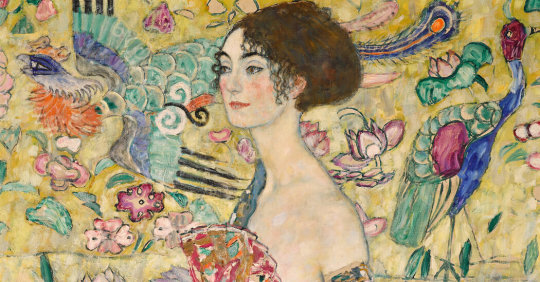
View On WordPress
0 notes
Text
tumblr nezná 100 filmů! aneb 18. statistika

Nenasytná Tiffany (2015) : nezná 91,5 %, vidělo 4,2 %
Konec srpna v hotelu Ozon (1966) : nezná 88,3 %, vidělo 5 %
Záhrada (1995) : nezná 86,1 %, vidělo 1,4 %
O slavnosti a hostech (1966) : nezná 84,6 %, vidělo 6,2 %
V žáru královské lásky (1990) : nezná 84,4 %, vidělo 6,3 %
Hezké chvilky bez záruky (2006) : nezná 84,1 %, vidělo 1,4 %
Pirko (2016) : nezná 83,6 %, vidělo 1,5 %
Anděl Exit (2000) : nezná 83 %, vidělo 1,9 %
Dívka s mušlí (1980) : nezná 82,5 %, vidělo 4,8 %
Eva Nová (2015) : nezná 81,4 %, vidělo 1,7 % N
nenáhodné poznatky: speciální faktoidní edice
zastoupení filmů podle dekády vypadá takto:
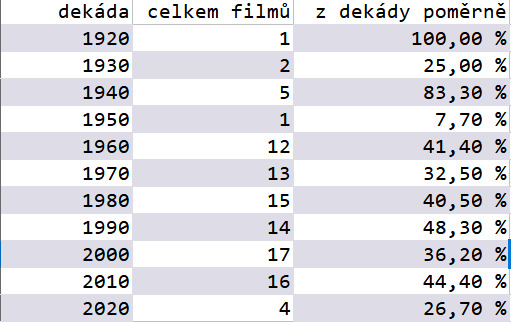
Tedy nejvíce filmů ze stovky neznámých pochází z počátku tisíciletí, následují roky 2010–19 a na třetím místě máme osmdesátky. Ale pokud se podíváme na všechny filmy z daného desetiletí, zjistíme, že nejméně známe filmy z čtyřicátých let (v absolutních číslech je to pět filmů neznámých a jeden známý, ale neviděný), dvacátá léta nepočítaje. Naopak nejvíce známe filmy z padesátek, což není překvapivé, protože většina filmů z tohoto období, o kterých se hlasovalo, byly pohádky nebo klasiky typu Švejk.
nejvíce neznámých filmů je z roku 1966, je jich... 6 (*devil eyes*)
o těchto filmech v průměru hlasuje 65,93 člověka (dovolím si říct... 66), u všech filmů je to 71,18 osoby a u viděných filmů 76,83
pro jednou se seriózně pobavme taky o žánru:

Tento lame graf znázorňuje, že 57 filmů je na ČSFD označeno jako komedie, 39 jako drama, 9 jako pohádka, 8 jako krimi, psychologický, fantasy nebo horor, 7 jako romantický, 6 jako sci-fi a pak nějaké další drobné. Nutno podotknout, že kategorizace ČSFD jsou často hodně podivné a nedá se jim věřit.
a nakonec něco o režisérech (hvězdičkou jsou označeni ti, kteří figurují také v žebříčku viděných filmů):
4 filmy – Juraj Herz*, Tomáš Vorel, Karel Kachyňa, Zdeněk Podskalský*, Martin Frič*
3 filmy – Vladimír Michálek, Ladislav Rychman, Jan Švankmajer
2 filmy – Andy Fehu, Jan Schmidt, Jan Němec, Věra Chytilová, Jaroslav Soukup, Dan Svátek, Miroslav Cikán, Josef Pinkava, Jiří Strach*, Jiří Mádl, Martin Kotík
1 film – Martin Šulík, Lucia Klein Svoboda + Petr Svoboda, Jiří Svoboda, Marko Škop, Tereza Nvotová, Jasmina Bralić-Blažević, Aurel Klimt*, Otakar Fuka, Vladimír Slavínský, Martin Ťapák, Martin Hollý, Šimon Pešta, Ivan Passer, Bořivoj Zeman*, Jaroslav Papoušek, Vítězslav Hádl, Jaroslav Balík, František Vláčil, Marek Dobeš + Štěpán Kopřiva, Zdeněk Sirový*, Pavel Soukup, Ondřej Trojan*, Jiří Menzel*, Filip Renč*, Oldřich Lipský*, Miloš Forman, Irena Pavlásková, Jonáš Karásek, Libuše Koutná, Gustav Machatý, Ester Krumbachová, Zdeněk Troška*, Jindřich Polák*, Braňo Mišík, Jaromil Jireš, Miroslav Šmídmajer*, Zdeněk Jiráský, Tomáš Pavlíček, Ota Koval, Kryštof Hanzlík, Václav Marhoul, Milan Cieslar*, Bohdan Sláma, Petr Zelenka, Filip Remunda + Vít Klusák, Jiří Krejčík, Václav Vorlíček*, Helena Třeštíková, F. A. Brabec*
A to by myslím stačilo. Tentokrát to bylo mnoho dat a faktů, málo dojmů. Tak ty třeba zase příště, až něco uvidíte. Všechny filmy mimo top 10 pod perexem. Pá.
Špína (2017)
Babičky dobíjejte přesně! (1983) N
Řád saténových mašlí (2000)
O kouzelném zvonu (1998)
Pumpaři od Zlaté podkovy (1978)
Dva týdny štěstí (1940)
Pacho, hybský zbojník (1975)
Dotek motýla (1972)
Tichá bolest (1990)
Prach a broky (2015)
Pražská 5 (1988)
Kráva (1992)
Intimní osvětlení (1965)
Fantom Morrisvillu (1966)
Jídlo (1992)
Hodinu nevíš... (2009) N
Prázdniny v Provence (2016)
Provdám svou ženu (1941)
Ohnivé ženy mezi námi (1987) N
Kam čert nemůže (1959)
Všichni musí být v pyžamu (1984)
Křtiny (1981)
Milenci v roce jedna (1973)
Dým bramborové natě (1976) N
Byl jsem mladistvým intelektuálem (1999)
Smuteční slavnost (1969)
Hra o jablko (1976)
Městem chodí Mikuláš (1992)
Shoky & Morthy: Poslední velká akce (2021)
Lesapán (2015)
Výbuch bude v pět (1984)
Pějme píseň dohola (1990)
Zločin v šantánu (1968)
Klec (2019)
Na vlastní nebezpečí (2007) N
Srdečný pozdrav ze zeměkoule (1982) N
Kočár do Vídně (1966)
Jak ukrást Dagmaru (2001)
Ohnivé ženy (1984)
Smrt talentovaného ševce (1982)
Černý Petr (1963)
Pojedeme k moři (2014)
Valentin Dobrotivý (1942)
Když Burian Prášil (1940)
Skřítek (2005)
Čas sluhů (1989)
Invalid (2023)
Pánská jízda (2004)
Kdo probudí Pindruše...? (1989)
Na střeše (2019)
Erotikon (1929)
Vražda Ing. Čerta (1970)
Deváté srdce (1979)
Andělská tvář (2001)
Ikarie XB-1 (1963)
Roztomilý člověk (1941)
Nikdy neříkej nikdy (2023)
Učitel tance (1994)
Vy nám taky, šéfe (2008)
Případ mrtvého nebožtíka (2020)
Hrdinný kapitán Korkorán (1934)
Dáma na kolejích (1966)
Poupata (2011)
Chata na prodej (2018)
Svatba upírů (1992)
Úsměvy smutných mužů (2018) N
Kočičí princ (1978)
Královský slib (2001) N
Morgiana (1972)
Něco z Alenky (1988)
Anton Špelec, ostrostřelec (1932)
Je třeba zabít Sekala (1998)
Mazaný Filip (2003)
Colette (2013) N
Otesánek (2000)
Instalatér z Tuchlovic (2016)
Sestřičky (1983)
Venkovský učitel (2008)
Knoflíkáři (1997)
Český sen (2004)
Drahé tety a já (1974)
Upír z Feratu (1982)
Jen ho nechte, ať se bojí (1977)
Tři životy (2007)
Vyšší princip (1960)
Metráček (1971)
Kdo chce zabít Jesii? (1966)
Katka (2009)
Kouř (1990)
V peřině (2011)
8 notes
·
View notes
Text
Klimt’s ‘Lady With a Fan’ Brings $108.4 Million, Auction Record for the Artist
Klimt’s art-historical importance as the leader of the turn-of-the-century Vienna Secession movement, and the decorative sumptuousness of his paintings, have always made him a highly valued artist. But those values soared into a different dimension in 2006 when the New York-based cosmetics magnate Ronald S. Lauder paid $135 million for the artist’s gold-drenched 1907 portrait of a prominent…

View On WordPress
0 notes
Text
Klimt’s ‘Lady With a Fan’ Brings $108.4 Million, Auction Record for the Artist
Klimt’s art-historical importance as the leader of the turn-of-the-century Vienna Secession movement, and the decorative sumptuousness of his paintings, have always made him a highly valued artist. But those values soared into a different dimension in 2006 when the New York-based cosmetics magnate Ronald S. Lauder paid $135 million for the artist’s gold-drenched 1907 portrait of a prominent…
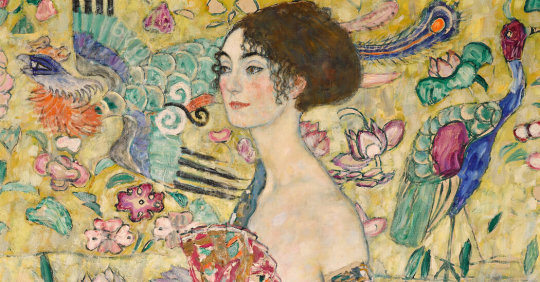
View On WordPress
0 notes
Text
Klimt’s ‘Lady With a Fan’ Brings $108.4 Million, Auction Record for the Artist
Klimt’s art-historical importance as the leader of the turn-of-the-century Vienna Secession movement, and the decorative sumptuousness of his paintings, have always made him a highly valued artist. But those values soared into a different dimension in 2006 when the New York-based cosmetics magnate Ronald S. Lauder paid $135 million for the artist’s gold-drenched 1907 portrait of a prominent…
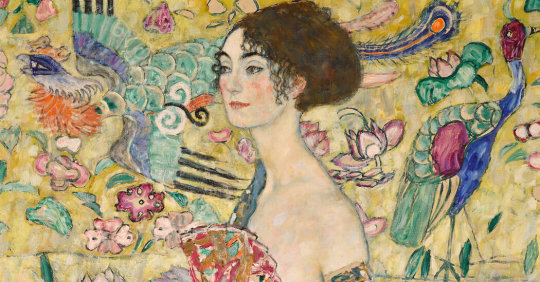
View On WordPress
0 notes
Text
Klimt’s ‘Lady With a Fan’ Brings $108.4 Million, Auction Record for the Artist
Klimt’s art-historical importance as the leader of the turn-of-the-century Vienna Secession movement, and the decorative sumptuousness of his paintings, have always made him a highly valued artist. But those values soared into a different dimension in 2006 when the New York-based cosmetics magnate Ronald S. Lauder paid $135 million for the artist’s gold-drenched 1907 portrait of a prominent…
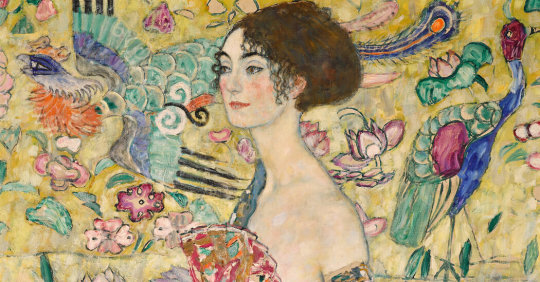
View On WordPress
0 notes
Link
0 notes
